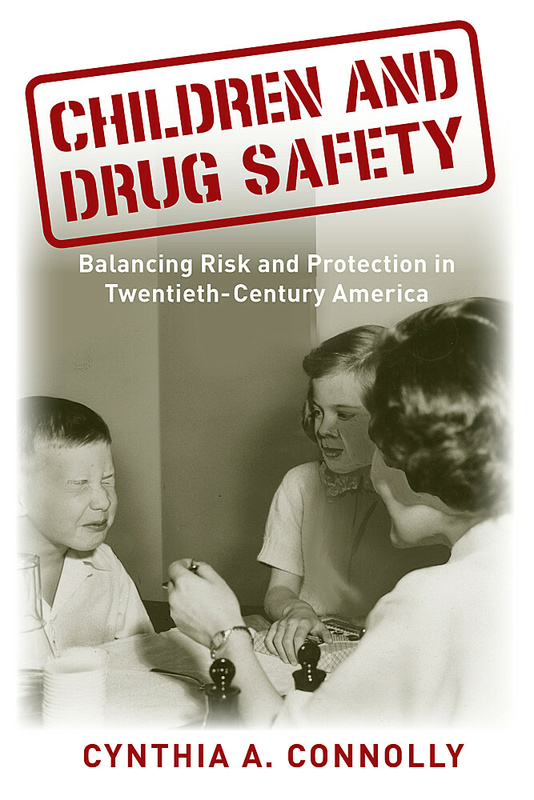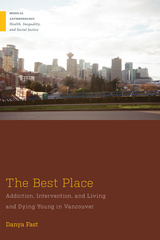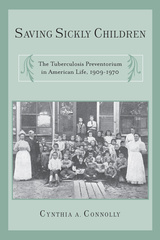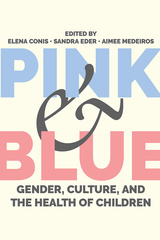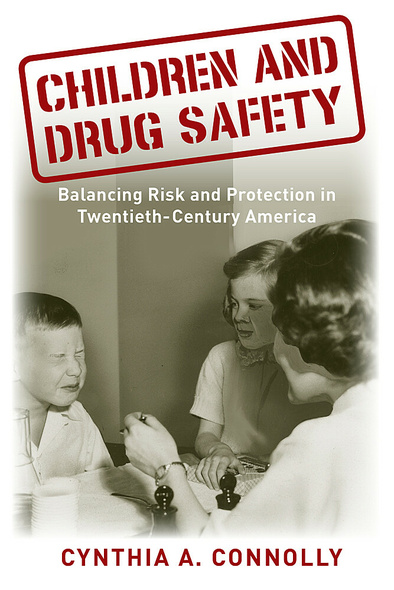
260 pages, 6 x 9
8
Paperback
Release Date:11 May 2018
ISBN:9780813563879
Hardcover
Release Date:11 May 2018
ISBN:9780813563886
Children and Drug Safety
Balancing Risk and Protection in Twentieth-Century America
Rutgers University Press
Winner of the 2018 Arthur J. Viseltear Award from the Medical Care Section of the American Public Health Association
Children and Drug Safety traces the development, use, and marketing of drugs for children in the twentieth century, a history that sits at the interface of the state, business, health care providers, parents, and children. This book illuminates the historical dimension of a clinical and policy issue with great contemporary significance—many of the drugs administered to children today have never been tested for safety and efficacy in the pediatric population.
Each chapter of Children and Drug Safety engages with major turning points in pediatric drug development; themes of children’s risk, rights, protection and the evolving context of childhood; child-rearing; and family life in ways freighted with nuances of race, class, and gender. Cynthia A. Connolly charts the numerous attempts by Congress, the Food and Drug Administration, the American Academy of Pediatrics, and leading pediatric pharmacologists, scientists, clinicians, and parents to address a situation that all found untenable.
Open access edition funded by the National Endowment for the Humanities.
The text of this book is licensed under a Creative Commons Attribution NonCommercial-NoDerivatives 4.0 International License: https://creativecommons.org/licenses/by-nc-nd/4.0/
Children and Drug Safety traces the development, use, and marketing of drugs for children in the twentieth century, a history that sits at the interface of the state, business, health care providers, parents, and children. This book illuminates the historical dimension of a clinical and policy issue with great contemporary significance—many of the drugs administered to children today have never been tested for safety and efficacy in the pediatric population.
Each chapter of Children and Drug Safety engages with major turning points in pediatric drug development; themes of children’s risk, rights, protection and the evolving context of childhood; child-rearing; and family life in ways freighted with nuances of race, class, and gender. Cynthia A. Connolly charts the numerous attempts by Congress, the Food and Drug Administration, the American Academy of Pediatrics, and leading pediatric pharmacologists, scientists, clinicians, and parents to address a situation that all found untenable.
Open access edition funded by the National Endowment for the Humanities.
The text of this book is licensed under a Creative Commons Attribution NonCommercial-NoDerivatives 4.0 International License: https://creativecommons.org/licenses/by-nc-nd/4.0/
Cynthia Connolly, in this brilliant piece of scholarship, demonstrates not only that drug safety in children has often driven key moments in pharmaceutical regulation, but that issues regarding the logistics, ethics, and market priorities of testing pharmaceuticals in children have evolved and endured for over a century.
By exploring the historical context of children and drug therapy, Connolly is the first to link the historiography of pharmaceuticals with the history of childhood and health care. Children and Drug Safety is timely and will make significant contributions to scholarship in the history of health care.
Making children’s medicines tasty makes the experience of being sick less stressful for kids, and helps doctors and parents get kids to take them peacefully. But there is also the danger, if they are too tasty, that kids will consume them in secret, and overdose.
Children’s aspirin is a stark example of that. St. Joseph Aspirin for Children was released in 1947. It was orange-colored and orange-flavored and often advertised as ‘candy aspirin.’ And ‘within a few years of its introduction, the incidence of aspirin poisoning in young children increased dramatically, almost five hundred percent,’ writes Cynthia Connolly, a professor of nursing at the University of Pennsylvania who studies the history of pediatric health care. ‘I, myself, am a former aspirin-poisoned child,’ Connolly told me. It happened in 1961 or 1962, when she was 3 or 4 years old, she says. ‘My parents kept it up high because they knew I loved it. It had a wonderful granular taste; it tastes like a SweeTart. One time when they weren’t looking, I got up there and got the St. Joseph Aspirin for Children, took almost the whole bottle, and then fell off the counter and broke my arm. While still holding the medicine by the way.’ Her parents found her when she screamed, and she had to go to the hospital and get her stomach pumped—and her arm set.
The dangers of candy aspirin led to the development of the safety cap, Connolly writes. And the pharmaceutical industry came to realize that it probably wasn’t a great idea to sell medicine as ‘candy.’
‘Candy aspirin,’ safety caps, and the history of children’s drugs: excerpt of Children and Drug Safety by Cynthia Connolly on Penn Today
New Scholarly Books: Weekly Book List, June 8,' by Nina C. Ayoub
This is a succinct, well-organized topical and chronological exploration of child health research and social welfare policy debates and related legislation from the late-19th through the early-21st century.
Children and Drug Safety is an extremely readable and surprisingly enjoyable book that adds nuance to our understanding of the history of pediatrics, medicine, and pharmacy.
[The book] demonstrates a deep understanding of the technical details of pediatric care that reflects the author’s own professional expertise in this area....[and] constitutes a valuable and sobering introduction to the history of American child drug safety debates during the twentieth century.
Cynthia Connolly, in this brilliant piece of scholarship, demonstrates not only that drug safety in children has often driven key moments in pharmaceutical regulation, but that issues regarding the logistics, ethics, and market priorities of testing pharmaceuticals in children have evolved and endured for over a century.
By exploring the historical context of children and drug therapy, Connolly is the first to link the historiography of pharmaceuticals with the history of childhood and health care. Children and Drug Safety is timely and will make significant contributions to scholarship in the history of health care.
Making children’s medicines tasty makes the experience of being sick less stressful for kids, and helps doctors and parents get kids to take them peacefully. But there is also the danger, if they are too tasty, that kids will consume them in secret, and overdose.
Children’s aspirin is a stark example of that. St. Joseph Aspirin for Children was released in 1947. It was orange-colored and orange-flavored and often advertised as ‘candy aspirin.’ And ‘within a few years of its introduction, the incidence of aspirin poisoning in young children increased dramatically, almost five hundred percent,’ writes Cynthia Connolly, a professor of nursing at the University of Pennsylvania who studies the history of pediatric health care. ‘I, myself, am a former aspirin-poisoned child,’ Connolly told me. It happened in 1961 or 1962, when she was 3 or 4 years old, she says. ‘My parents kept it up high because they knew I loved it. It had a wonderful granular taste; it tastes like a SweeTart. One time when they weren’t looking, I got up there and got the St. Joseph Aspirin for Children, took almost the whole bottle, and then fell off the counter and broke my arm. While still holding the medicine by the way.’ Her parents found her when she screamed, and she had to go to the hospital and get her stomach pumped—and her arm set.
The dangers of candy aspirin led to the development of the safety cap, Connolly writes. And the pharmaceutical industry came to realize that it probably wasn’t a great idea to sell medicine as ‘candy.’
‘Candy aspirin,’ safety caps, and the history of children’s drugs: excerpt of Children and Drug Safety by Cynthia Connolly on Penn Today
New Scholarly Books: Weekly Book List, June 8,' by Nina C. Ayoub
This is a succinct, well-organized topical and chronological exploration of child health research and social welfare policy debates and related legislation from the late-19th through the early-21st century.
Children and Drug Safety is an extremely readable and surprisingly enjoyable book that adds nuance to our understanding of the history of pediatrics, medicine, and pharmacy.
[The book] demonstrates a deep understanding of the technical details of pediatric care that reflects the author’s own professional expertise in this area....[and] constitutes a valuable and sobering introduction to the history of American child drug safety debates during the twentieth century.
CYNTHIA A. CONNOLLY is a pediatric nurse and historian of children’s health care. She is an associate professor at the University of Pennsylvania School of Nursing where she is the Rosemarie B. Greco Term Endowed Associate Professor in Advocacy. She is associate director at the Barbara Bates Center for the Study of the History of Nursing, a faculty director at the Field Center for Children’s Policy, Practice, and Research, and a senior fellow at the Leonard Davis Institute of Health Economics, both at the University of Pennsylvania. She is the author of Saving Sickly Children: The Tuberculosis Preventorium in American Life, 1909–1970 (Rutgers University Press).
1. Drug Therapy: From “Baby Killers” to Baby Savers, 1906–1933
2. New Drugs, Old Problems in Pediatrics: From Therapeutic Nihilism to the Antibiotic Era, 1933–1945
3. The Child as Drug Development Problem and Business Opportunity in a New Era, 1945-1961
4. The Growth and Development of the Therapeutic Orphan: 1961-1979
5. A “Big Business Built for Little Customers:” Candy Aspirin, Children, and Poisoning, 1947–1976
6. Children and Psychopharmacology in Postwar America
7. Pediatric Drug Development and Policy after 1979
Appendix
Acknowledgements
Notes
Index
2. New Drugs, Old Problems in Pediatrics: From Therapeutic Nihilism to the Antibiotic Era, 1933–1945
3. The Child as Drug Development Problem and Business Opportunity in a New Era, 1945-1961
4. The Growth and Development of the Therapeutic Orphan: 1961-1979
5. A “Big Business Built for Little Customers:” Candy Aspirin, Children, and Poisoning, 1947–1976
6. Children and Psychopharmacology in Postwar America
7. Pediatric Drug Development and Policy after 1979
Appendix
Acknowledgements
Notes
Index

